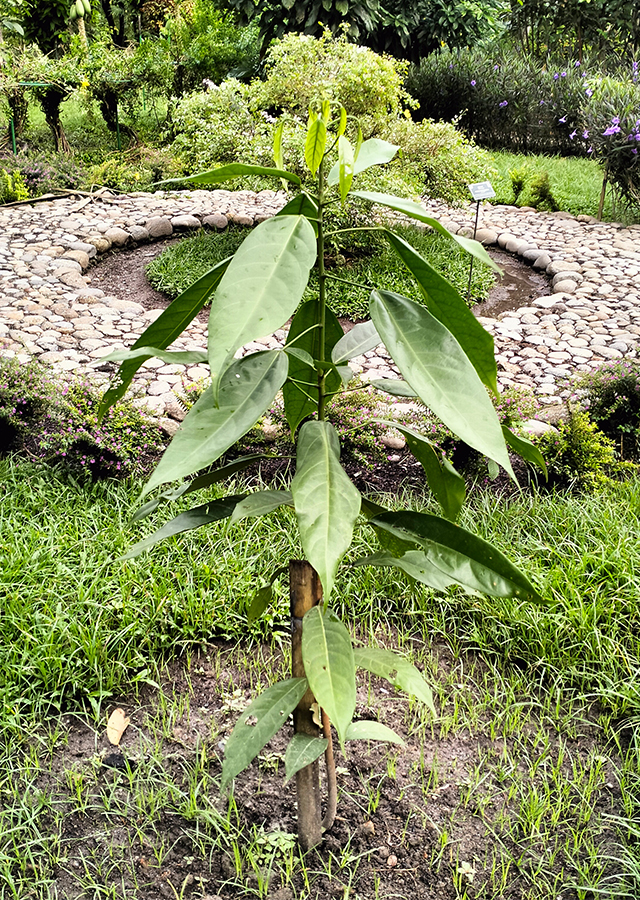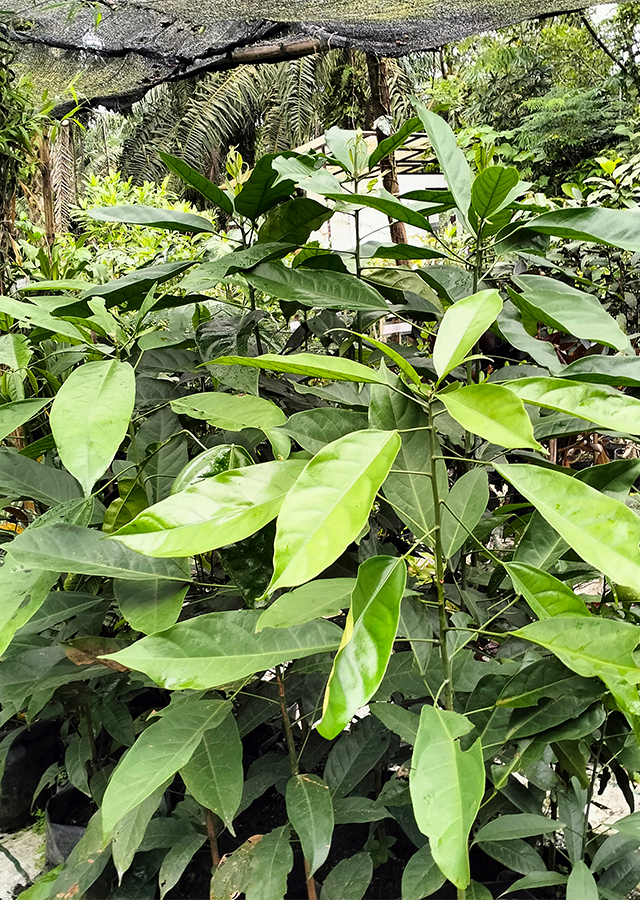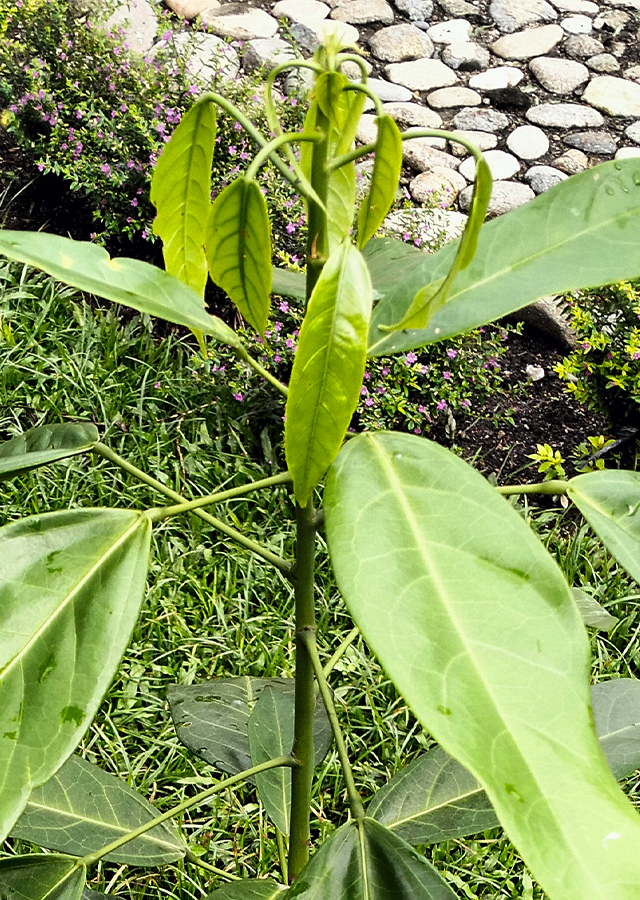Traditional Herbs from Cola nitida
cure_ulcers
- Take kola bark, ginger and pepper to taste.
- Soak all the ingredients.
- Wait for a few moments until it changes color.
- Strain then drink.
What is Cola nitida Looks like??



Parts of Cola nitida that could be used
- Seeds", "Bark", "Fruit", "Sap
Cola nitida Distribution
Cola nitida or kola plant is native to West Africa and Sudan. It grows wild in the Ivory Coast and Liberia, and is also planted from Sierra Leone to Gabon. This plant entered Indonesia in the early 10th century. African people have long used C. nitida for various purposes for religious rituals and ceremonial activities, such as weddings, naming children, burials, and sacrifices to African mythological gods. Conventionally, C. nitida is also used in tropical Africa for the treatment of all types of diseases and has been widely consumed as a stimulant for a long time. The seeds of the kola plant can be consumed and the extract has been used in the food and beverage industry as a flavor enhancer, and has been used as an original ingredient in the manufacture of Coca-Cola soft drinks. In addition, kola seeds can be used in jam production due to their high pectin content, and are also often used as a coffee substitute. Kola nuts are registered in the U.S. Food and Drug Administration (FDA) and declared as a food ingredient that is safe for human consumption and is classified as a spice or natural food flavor enhancer. The FDA has also approved kola seed extract as an inactive ingredient in certain drugs. The red color of kola seeds is also a potential source of food coloring. C. nitida wood is widely used by people as a material for making furniture, houses, ships, plates, but the wood is susceptible to borers. C. nitida also functions as a shade tree in cocoa plantations.Agroecology of Cola nitida
C. nitida is a tropical plant in hot, humid, tropical lowland forests and is usually found growing at altitudes up to 300 m above sea level, but is also found at altitudes up to 800 m above sea level, with average annual rainfall in the range of 1,400 - 2,500 mm. but tolerates 1,200 - 3,500 mm and is able to survive for 3 months or more in the dry season. C. nitida can thrive in heavy or light soil as long as the soil is good depth, well drained, contains lots of humus, and is positioned in full sun, while young trees need shade. C. nitida can grow in soil with a soil pH in the range of 5 - 6, but tolerates 4.3 - 7. It grows best in areas where the annual daytime temperature is in the range of 21 - 30 �C, but can tolerate 10 - 35 �C. C. nitida is drought tolerant, and can be cultivated in drier areas as long as groundwater is available.
Morphology of Cola nitida
- Stems\u00a0round, sometimes straight, diameter can reach 1.5 m, can be without branches for several meters. The bark is cracked and grayish brown with rough lines, but the small branches are smooth.
- Leaves are simple, single, green, deeply veined, smooth surface, elliptical with flat leaf edges and tapered leaf tips (leaves appear individually on alternate sides of the branch). "Flowers are greenish yellow or white. with purple and red stripes and edges inside. The flowers form short, irregular clusters, forming a cup.
- The fruit is light green, the dried fruit has a wrinkled, uneven texture and a curved ridge that runs along the length of the pod of 5 cells that curve backwards, and contain about 10 seeds per fruit. They split in half to release the seeds.
- Seeds are irregular, large, cream to reddish brown, aromatic.
Cultivation of Cola nitida
- Propagation of plants through seeds. To encourage germination soak seeds in water for 24 hours before planting and place in a warm location (around 29 \u00b0C). Germination is slow, takes 2 - 3 months. Germination within 10 - 18 days is achieved if the seeds are sown at a temperature of 30 \u00b0C.
- Plants begin to produce seed pods at around 7 years of age.
Cola nitida, more details :
Chemical Content of Cola nitidaAlkaloids, saponins, tannins, cardenolides, proanthocyanidins, methylxanthin (caffeine and theobromine), catecin, theophylline, cholatin, phlobaphene, anthocyanins, flavonoids.
Benefits of Cola nitida
Treats migraines, morning sickness, indigestion, neuralgia, wounds and inflammation, hemorrhoids, ulcers, aphrodisiacs, appetite suppressants, stimulants and decoctions for the treatment of fever, dysentery, diarrhea, stimulates the nervous system and to fight fatigue and depression, preventing metabolic disorders. Has antimicrobial activity.
Simplisia of Cola nitida
- Prepare the kola seeds then wash them thoroughly then drain them.
- Dry them in direct sunlight until completely dry.
- Store\u00a0simply in plastic or a clean, airtight container.
Another Facts for Cola nitida :
Synonym of Cola nitidaBichea nitida (Vent.) Farw., Braxipis nitida (Vent.) Raf., Sterculia nitida Vent.
Habitus of Cola nitida
Tree. Medium sized tree, with a height of around 8-12, but can also reach a height of 27 m
Habitat of Cola nitida
- Forest
No comments:
Post a Comment